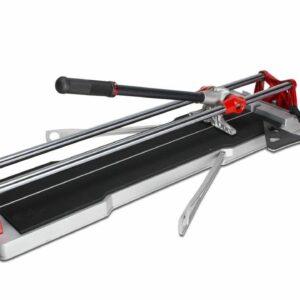SMITH MANUFACTURING FS150 Electric Handheld Rotary Scarifier
SKU: SMTH-FS150$681.75 – $1,574.47
Apply for finance
Description
Product Details
Smith FS150 Electric Handheld Rotary Scarifier
The SMITH FS150 is a fast, rugged, and lightweight handheld rotary eraser, designed for heavy-duty scabbling, texturing, abrading, descaling, reducing, keying, and cleaning asphalt and concrete. Cleans up to a 7" removal path using a variety of cutters to achieve the surface finishes required for the job. Add a vacuum for dust-free applications.
Best for touch-ups, reducing, smoothing, polishing, scarifying, erasing, and more. Used by concrete contractors and do-it-yourselfers.
Standard Features
- Vacuum port
- Ergonomic vibration-dampening handle
Power Options
FS150.T.Makita - 1.3HP/120V electric (220V optional)
FS150 Pneumatic
FS050 Electric Scarifier
Removal and Speed
- ≤ 7" wide
- 1/16" depth/pass
- ≤ 100 SF/hour
Cutter Choices
- Tungsten carbide flails
- Steel finish cutters
- Tungsten carbide scraping cutters
Size / Weight
Weight: 13 lbs (5.8kg)
Dims: 20 x 12 x 11 in
Surface Profiles (SP1 – SP10)
The surface profile (SP) chart is used as a visual representation of desired surface textures, roughness, and general appearance on concrete or asphalt. Each profile has a corresponding number, ranging from SP1 (nearly flat) to SP10 (extremely rough).
The surface profile is defined as the measurement of the average distance from the peaks of the surface to the valleys, as seen through a cross-section of the prepared surface.

The texture and appearance of the profile obtained through the surface-preparation process will vary, depending upon the concrete/asphalt strength, composition, aggregate and finish. On sound surfaces, the range of variation can be controlled to represent these standards, however, as removal depth increases, the profile of the prepared substrate will be increasingly dominant by the type and size of the coarse aggregate.
Confirmation that the desired profile has been achieved during the surface-preparation process is done by visually inspecting the surface, then comparing it to the profiles depicted by replica profile tiles, replica putty, replica tape, or SP photos (see below). The replica putty test is ASTM D7682, and the replica tape test is ASTM D4417.
The creation of a surface profile can be accomplished with a variety of tools, equipment and materials, and requires a specification to select the desired SP range, dependent upon the type of overlay system and material thickness to be installed












